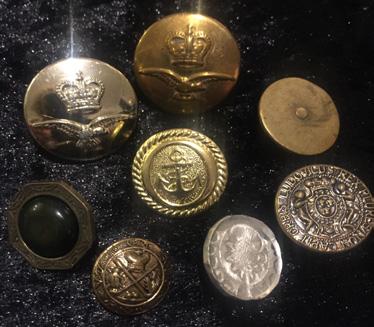
2 minute read
Tiny treasures in the button box


Advertisement

During these uncertain times many of us are using the extra time at home to have a good old clear out of our cupboards, and occasionally we come across little treasures we’d forgotten we had. One of these could well be your humble button box or tin – have a look – there could be something special inside!
Really early buttons were simply made by stitching together two pieces of fabric over a piece of card. Others were made using wool, shell or bone. The richer a person was the nicer their buttons would be and some are made from precious metals and enamels. Many buttons made from shell have designs etched on them. Some are done by hand and some by machine.

particularly in Birmingham. Metal buttons could now be produced much more cheaply than before and there are thousands of metal military buttons bearing the crest of different services or regiments. Glass buttons were also more widely manufactured, many being black due to the custom of wearing ‘mourning’ for a prescribed period of time following a bereavement. Again, some are very simple and others very ornate; the cheapest are pressed glass and the rarest are hand carved natural jet – and it takes a real expert to know the difference! Once plastic became widely used in the twentieth century the large button factories in the Midlands declined due to cheap imports from abroad. However colours, shapes and sizes have exploded into a rainbow of varieties.
The lovely thing about owning a button tin is you can add to it – from Grandma’s tin, from favourite garments, or from car boot sales, or online auctions if you become a serious collector. You can use them for home schooling – counting, art and sewing – and also add tiny treasures of your own for your own and others’ amusement, to hunt out each time you open the tin and weave stories around the treasure inside!
Interested in learning more? Discovering Old Buttons by Primrose Peacock


The Button Box: The story of women in the 20th century, told through the clothes they wore by author Lynn Knight (DLF 2017 author) www.lynnknight.co.uk










